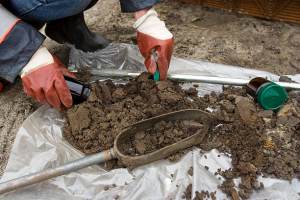Soil sampling is a critical process in many fields including agriculture, construction, environmental remediation, and landscaping. The goal is to collect soil samples that accurately represent the area being tested or studied. This requires using a proper soil sampling tool for the job. Numerous soil sampling instruments are at your disposal, spanning from basic handheld tools to cutting-edge powered equipment. Opting for the appropriate sampling tool is essential to access the required soil depth and type, all while managing your budget effectively. This guide will provide a detailed overview of the common soil sampling tools and their best uses.

Hand Augers
Hand augers are a popular choice for basic soil sampling. They utilize a corkscrew bit attached to extension rods to drill into the ground and extract core samples. Different auger sizes are available based on the required depth. Larger augers up to 2 feet in diameter can sample soil up to 10 feet deep or more. Hand augers are affordable and portable. They work well in most soil types except those that are excessively rocky. The spiral auger bit brings up an intact cross-section of soil for inspection. Hand augers do require physical labor to operate. For deep sampling, power-driven augers are more practical.
Post Hole Diggers
Post hole diggers serve as a manual alternative for collecting surface-level soil samples. They are less expensive than augers but do not produce intact soil cores. Post hole diggers have two shovel-like blades joined at a pivot. The handles are squeezed together to drive the blades into the ground, capturing a soil sample. This sample is then inspected from the surface or sides of the hole. Post hole diggers only reach 1-3 feet in depth depending on soil conditions. They are a good option for preliminary sampling to understand topsoil composition. Most models have interchangeable blades. Industrial-strength post hole diggers are available for denser soils. Since they lack auger’s intact cores, more trial holes may be needed to characterize the subsoil.
Power Augers
For deep and extensive soil sampling, power augers are essential. They utilize mechanical power to drive the auger bit, enabling faster and deeper soil collection. Common types include gas-powered portable augers, truck-mounted augers, and drill rigs. 2-person gas augers can sample down to 10 feet in depth. Truck-mounted augers are more robust, reaching depths up to 150 feet. Heavy-duty options like drill rigs allow soil core sampling above 200 feet. Hollow stem augers can collect continuous cores for detailed subsurface analysis. Powered options are much more productive than hand augering when collecting dozens of samples across a site. They excel at deep sampling for engineering surveys. The downside is their large capital cost. Power augers also require training to operate safely.
Specialized Soil Probes
Beyond basic soil coring tools, there are specialized probes to test specific soil properties. Common examples include:
- Bulk density probes – Drive a calibrated metal cylinder into the soil to measure compaction and density at various depths. Helps evaluate suitability for construction.
- pH probes – Use chemical or electronic sensors to check pH levels through the soil profile. Useful for agricultural sites to optimize nutrients.
- Tile probes – Install temporary underground tubes to allow extraction of undisturbed soil cores from greater depths of 10 feet or more. Helpful for accurate sampling below the water table.
- Penetrometers – Measure the force required to drive a standardized cone through soil layers. Indicates compactness and shear strength.
These specialty probes provide key data for soil studies. They quantify soil traits that basic samples cannot. The right probe can instantly provide density, pH, or penetration resistance data. These tools do require training and careful field procedures to use properly.
Conclusion
From simple hand tools to advanced power equipment, there are many options to suit any soil sampling need. Hand augers provide a versatile and low-cost method for collecting basic cores, while powered augers expand sampling depth and range dramatically. Specialized probes measure vital characteristics like density and pH. Consider the sampling locations, depth, soil types, and project budget when selecting soil sampling tools. Also factor in lab testing – some tools like tile probes produce high-quality cores for sensitive tests. With the right selection of agriculture farming tools, you can efficiently reveal the physical and chemical properties of the soil landscape. Just remember to always use proper sampling protocols to ensure representative, high-quality soil cores for your project.

